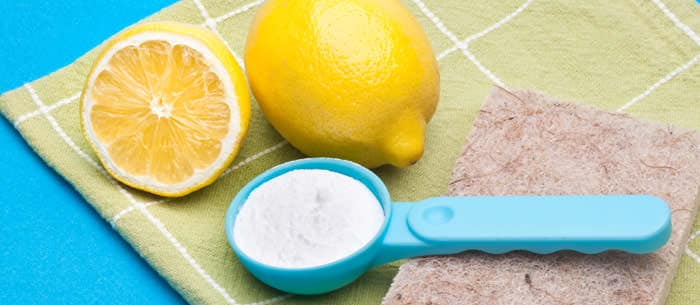Taking care of our environment is a process that starts at home. Everything from aerosol cans to harmful cleaning chemicals can affect the earth’s delicate balance, and there are plenty of easy ways to make green choices when it comes to keeping your home clean. To make this shift a reality, make sure you get your housekeeper on board, or find a housekeeper or house cleaning service who uses eco-friendly products.
Even small changes to your daily routine can go a long way. Line-drying laundry instead of using a dryer is not only budget-friendly, but eco-friendly as well. Replacing disposable paper towels with washable cheese cloths is a wise alternative when it comes to cleaning surfaces in the home. Homeopathic solutions are making waves for the future, and Pam Fettu, a registered homeopath, dedicates her time as a consultant and educator in natural healing methods from her home in San Diego, California.
“Homeopathy is green medicine,” Fettu says. “It uses natural substances that are safe and effective, with no harmful side-effects. It works energetically to awaken your own healing powers, conserves natural resources and doesn’t pollute the water supply or the environment.”
Greenpeace offers plenty of innovative suggestions for consumers to go green when it comes to replacing commercial cleaning solutions. Its No. 1 choice for natural solutions is good, old-fashioned soap. Mixing water with natural oils, salt or vinegar can clean just about every surface in your home with safe ingredients.
Here are a few other common household items you can use as green cleaners:
- Vinegar: Cleans calcium deposits, and cuts grease, grime or wax build-up.
- Eucalyptus Oil: Works as a disinfectant and deodorant, and can attack rust before it sets.
- Baking Soda: Deodorizes, removes stains and softens fabric.
- Isopropyl Alcohol: Works as a disinfectant for wounds, but can also be used to rid surfaces of grease or dirty residue.
- Lemon: Can be used as a disinfectant, and to remove oily stains.
Below, we’ve put together a list of seven items that have greener, more eco-friendly alternatives:
1) Air Freshener
Use baking soda and natural oils instead of aerosols to freshen the air in your home.
Here’s How: Open a box of baking soda and place it in your refrigerator or the bottom of your trash cans. Place citrus extracts or plants, such as lavender, into boiling water over the stove before guests come over, for an air freshener that smells fresh, rather than artificial.
2) Scouring Powder
Many commercial scouring powder products contain chlorine or other harmful chemicals. But baking soda and table salt are natural substances found in your home that can replace the abrasive solvents traditionally used to clean hard-to-scrub surfaces.
Here’s How: Use a wet-bristle brush to clean surfaces and use natural soap and salt or baking soda on greasy residue. Karyn Siegel-Maier, author of “The Naturally Clean Home: 150 Super-Easy Herbal Formulas for Green Cleaning”, also recommends store-bought extracts from natural sources like rosemary, lavender, lemon, rose or ginger.
Add a few drops to baking soda or borax for some extra cleaning power. But because these concentrated oils are skin irritants, wear protective gloves when cleaning. Essential oils can last indefinitely if kept in a cool, dry and dark place. (The exception is lemon extract, which usually has a shelf life of one year.)
3) Window Cleaner
Some glass cleaners contain ammonia, which can create harmful fumes if mixed with chlorine. Vinegar and water can cleanse greasy surfaces without such bad-to-breathe-in chemicals.
Here’s How: Siegel-Maier says that making cleaning solutions can be as simple as mixing three basic ingredients: one part vinegar, four parts water and a few drops of herbal oils. Pour this mixture into a reusable spray bottle and use it to clean surfaces like glass or appliances without leaving streaks.
4) Carpet Cleaner
Avoid spray-on solutions that contain eye and skin irritants by using baking soda or corn starch.
Here’s How: Vacuum your carpet and then sprinkle baking soda or corn starch onto it to remove any odours. Leave the powder on for about an hour and then vacuum again. Attack heavy carpet stains with soapy water, vinegar and a bristle brush, or blot with soda water and a clean rag.
5) Furniture Polish
Replace aerosol cans with extract and oil.
Here’s How: Mix one cup vegetable oil with one teaspoon lemon oil, and use a clean, dry rag to shine your furniture.
6) Metal Cleaner
There’s no need for heavy chemicals when it comes to cleaning dull silver or chrome. Vinegar and salt works just as well to bring back the shine.
Here’s How: Mix one tablespoon each of salt and baking soda with one litre of water. Bring to a boil and add a strip of aluminium foil. Place the dirty silver item into the boiling solution for three minutes, and then blot dry with a clean cloth.
7) Disinfectants
Use citrus extracts or juice to sanitize, while leaving a fresh scent.
Here’s How: Drop a few wedges of grapefruit or lemon into the garbage disposal to make your kitchen sink smell citrus clean. Use lemon juice to disinfect food areas or remove laundry stains. You can even rub a few drops of lemon juice onto clothes to remove oily stains. (Just make sure you wash those clothes immediately!)
Author of the article Sheila Szabo is a freelance creative writer from Northern San Diego. Her work can be found here.

